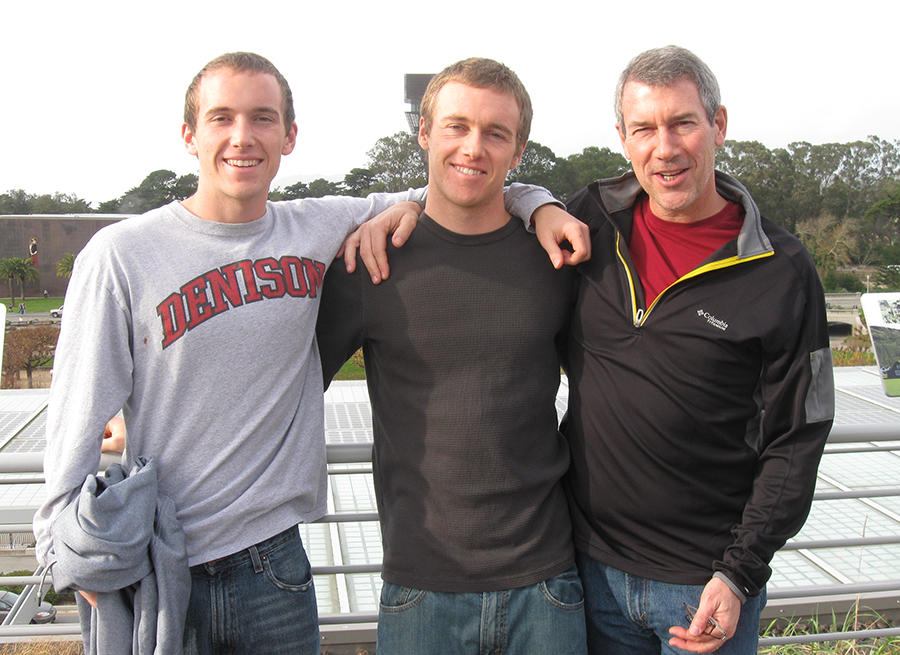Two Sons with a Rare Brain Cancer? We Choose to Fight through Advocacy
, by Brock Greene, Founder of Oligo Nation
Read how a father is advocating to save his two sons with oligodendrogliomas, and how his family copes.
Like most oligodendroglioma patient stories, ours started with the shock of the diagnosis on August 1, 2008. Our 16-year-old son, Spencer, was experiencing focal seizures in his right arm when he played soccer. After months of eliminating possible causes, a magnetic resonance imaging (MRI) scan confirmed a brain tumor called an oligodendroglioma the size of lemon in his right frontal lobe.
Two days later, Spencer had surgery to remove as much of the tumor as possible. We spent the next 20 months doing the MRI thing, hoping that the tumor would stay quiet for a long time. In April 2010, he had another focal seizure and was put on chemotherapy for a year.
In June, before Spencer started Temodar, an oral chemotherapy drug, we took a family vacation to Mexico. A few hours after arriving, our older son, Zach, then age 21, had a grand mal seizure. It was the scariest experience of my life. We returned home and the MRI revealed that Zach also had an oligodendroglioma. Fortunately, they removed “all” of his tumor.
As with most oligodendroglioma survivors, the medical story didn’t end there—far from it. Since then, both boys have had a recurrence and a second surgery followed by proton therapy and chemotherapy. And more recently, Spencer’s MRI showed apparent growth, so he has been on a clinical trial targeting the IDH1 gene for about a year. Both boys are on the ketogenic diet.
But, we are lucky. Both boys are doing well and living their lives with few limitations—other than having to live near a top brain tumor center. Zach recently received his doctorate in physics from Columbia University in New York and is looking to put all that knowledge to work. Spencer lives in the San Francisco Bay Area and works for a health care provider.
The Personal Journey
I don’t honestly think there’s a way for others to really understand what something like this does to your life and outlook. The grieving process often begins at diagnosis. And going through the five stages of grief isn’t pretty—and I doubt I will ever get to acceptance. Over time, I have found it possible to be positive and continue to lead a full life, but there’s no escaping the sense of dread of the future.
And our family has gotten better at dealing with our reality. At the beginning, we didn’t understand much about this disease, and we were somewhat afraid to find out more. Each new medical setback would plunge us into the fearful unknown. But we came to accept that in one way or another, we would find our way through it.
Without a doubt, the biggest factor in our coping with and, to some extent, overcoming the negatives of our situation has been the work we have done with Oligo Nation to advance research. Instead of feeling helpless in the face of a currently incurable disease, we are energized and excited about the progress and opportunities ahead. Two years ago, I moved from hopeful to optimistic, which might not sound like much, but it is a huge difference.
On a different level, the support we have received and continue to receive from friends, family, and others has been beyond belief. Our family is amazed and humbled by the love that we feel.
The final thing is that I know that we are lucky. Both our boys are alive and (mostly) well. Being grateful for what we have is more powerful than grieving over what we have lost.
Getting Involved
Having two kids with brain cancer was more than I could handle initially. But after a few months, I picked myself up off the floor. I remembered my father saying that “Greenes don’t take bad news lying down.” I realized I had to do anything and everything in my power to “save” my boys.
But where to start? I donated to a brain tumor foundation. Then, I checked their website and realized they weren’t funding any oligodendroglioma research. I checked other brain tumor foundations—no oligodendroglioma research. So, I called to see what could be done. They told me that they would create a dedicated oligodendroglioma research fund. We were successful over three years, but, ultimately, it was clear to me that this non-profit was not going to solve our problem.
Believe me, it was never our plan to run our own non-profit. But in early 2014, I jumped in all the way and created Oligo Nation. It was going to have to be the vehicle to deliver the new treatments my family and thousands of others needed. The priority was to get others in the oligodendroglioma community involved to support research and bring awareness to this disease.
It took us several years to build up our war chest, but in 2016, we started making grants for medical research. Over the past few years we have made 10 grants and have raised the visibility of oligodendroglioma research with leading institutions. Having money to invest is critical, but a lot of good things have happened by just asking, “How does your work apply to oligodendroglioma?”
One other area that has been of increasing importance is acting as a resource for others in the oligodendroglioma community as they try to navigate a difficult—and sometimes confusing—landscape of treatment options, second opinions, and insurance hurdles.
My family is committed 100 percent, every day of the year. That’s why we are excited to partner with the National Cancer Institute’s new program called NCI-CONNECT, which is focusing on selected rare adult central nervous system cancers, including oligodendroglioma. I believe that combining efforts of the NIH, non-profits, and the research institutions is an approach that will have a positive impact on improving care and treatment for patients.
